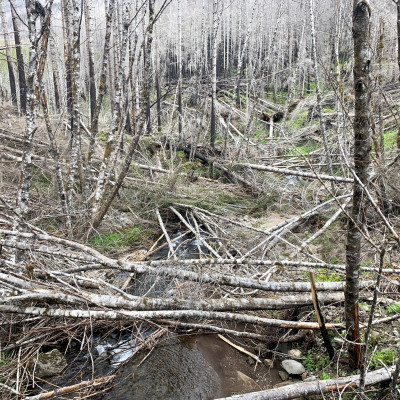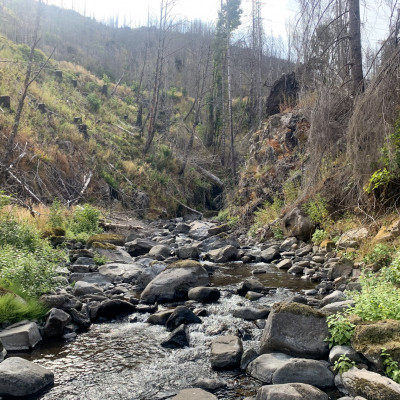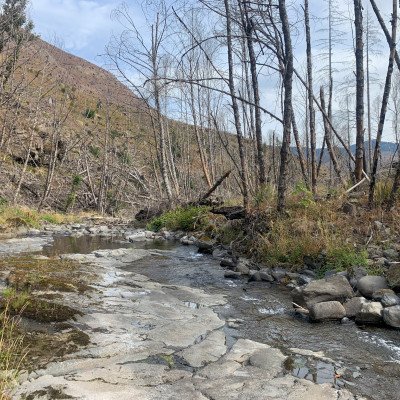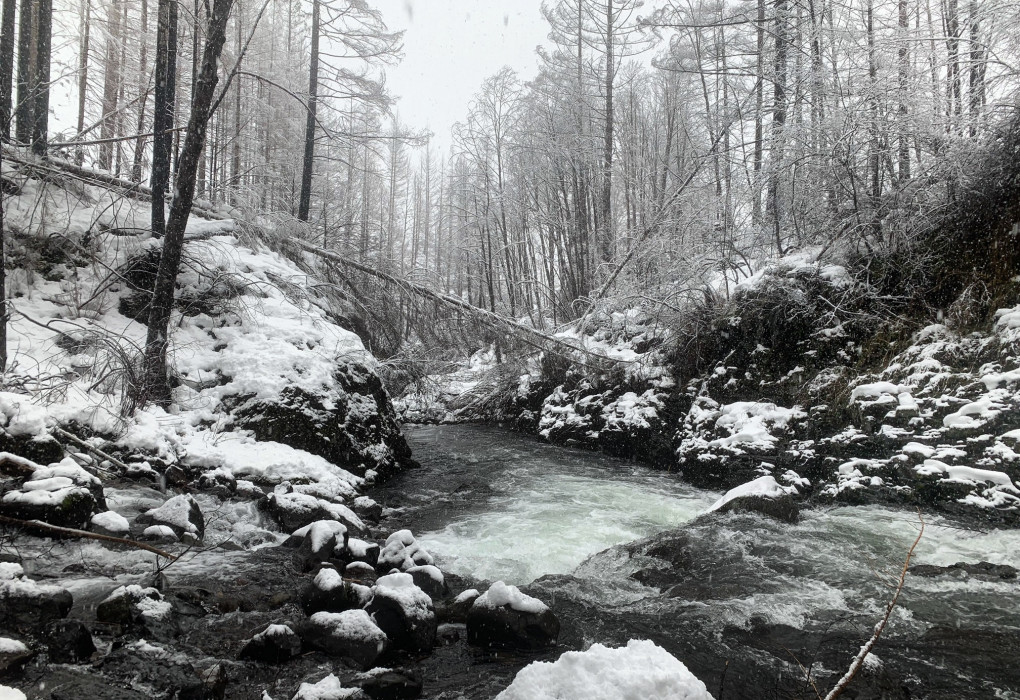Molalla River Restoration - PART III: Copper Creek
*Note: This is Part Three of a Four Part Series. Read Part One HERE, Part Two HERE and Part Four HERE.
Heavy rain gave way to deep snow as we made our way higher and higher up into the Molalla River watershed. Having grown up in the watershed and spent countless hours swimming and fishing in the Molalla, it was shocking to see the complete devastation of the 2020 fires. However, the foot of snow did help soften the blow.
Jim, Dave, and I trudged through the deep snow down to the confluence of Ogle Creek and the mainstem Molalla. The Molalla River flowed in a straight channel through bedrock. Adding wood to the mainstem here might help retain spawning gravel, but would be tricky to place in such a way that it would actually stay put and not just get swept downstream in the first high flow event. After another site visit following the spring snow melt, we refined our plan to focus on adding the majority of wood to Copper Creek, another tributary of the Molalla River on Fruit Grower’s property. Copper Creek is near where ODFW has focused spring Chinook reintroductions and where wild winter steelhead redds had previously been spotted.
Copper Creek is a bear to walk along. With no good road access to the lower two miles of the stream as it cuts through a deep canyon, it requires a committed surveyor. It also means that any wood placed in those lower two miles will have to be added by a helicopter - adding excitement - but also expense to the project. Despite what the steep canyon walls suggest, once you get down along the stream, Copper Creek actually has many areas of wide floodplain habitat to place large wood on. Before the fires, a thick riparian canopy of alders had lined the creek. Unfortunately, the vast majority perished in the fire. While many have fallen in or across the creek, they don’t contribute much to long-term large wood. This is because alders quickly disintegrate once submerged in water, especially when compared to conifers that can last decades in streams.
Adding wood to Copper Creek will help capture sediments from any landslides that might occur in the basin, meaning cleaner water for the fish and the people who live in Molalla and Canby, who get their drinking water from the river. Some of the captured materials will also include spawning gravel, creating additional habitat for wild winter steelhead redds. The wood will change the flow of water, causing scour pools to form which will be habitat for juvenile steelhead and Chinook. Once replanted, vegetation begins to shade the stream and water temperatures decrease. These pools will also be holding locations for wild spring Chinook to sit out the hot summers in.
Now that the plans are in place and a pre-restoration evaluation of the site has been completed, we look forward to actually adding the wood this spring. Shortly after winter steelhead spawn, Columbia Helicopters will be adding the majority of the wood to Copper Creek, with additional wood placed with excavators and highlines where possible. We can’t wait to update you with photos and a report of the work later this spring!
*This is Part III of a four-part series of the restoration efforts on the Molalla River. Read Parts I, II, and IV. The final installment of the series will be posted next week. Stay tuned!



